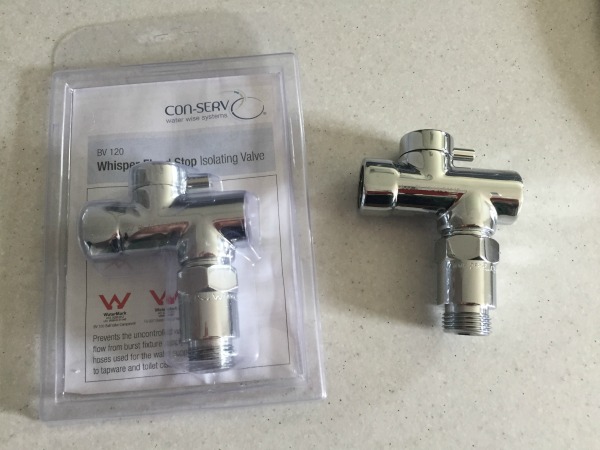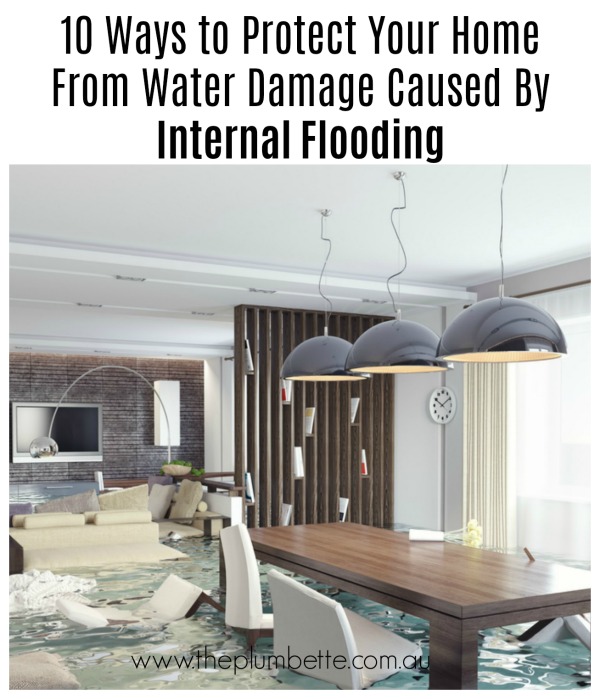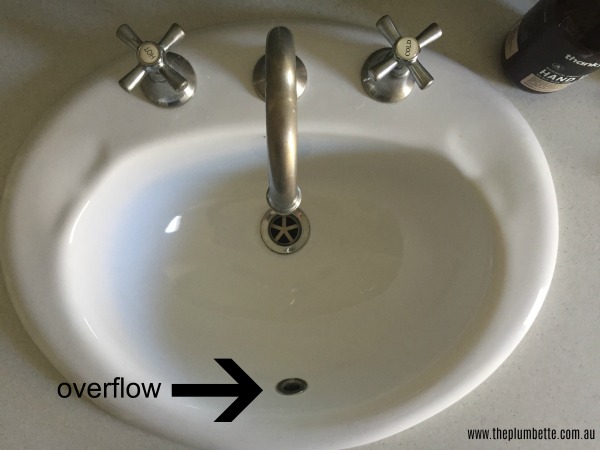We can often take for granted the convenience of plumbing in our homes. The handiness of water, run through pipes in our home, is something we don’t think about until we don’t have water or too much water comes out, causing an internal flood. Water damage caused by internal flooding in your home is not a fun situation to be faced with as it’s not just the damage that can be disheartening to deal with, but it’s the inconvenience of dealing with insurance companies and tradies to rectify the damage. If you own a home or live in one (which I’d hope is pretty much everyone who reads this blog) there are things you can do to protect your home from water damage caused by internal flooding. Some of these tips may need to be considered when planning a new build or renovation.
10 Ways to Protect Your Home From Water Damage Caused by Internal Flooding
1. Hot water units should be installed outside.
If you’re building or renovating a home, it’s important to consider what type of hot water unit you are going to use. It’s mandatory for instantaneous gas hot water units to be installed outside, for the emission of gases through the flue. But if you opt for a storage tank like an electrical hot water unit or heat pump, consider installing this outside. Hot water units will usually last between 10 to 15 years and one of the most common problems on older units is the inner tank rusts and the water disperses though the outer tank of the hot water unit. All internal hot water units should be installed with a safe tray and tundish to allow for the overflows – these are typical in commercial buildings and apartments. Most internal hot water units in older homes don’t have these safeguards and it can be a flood waiting to happen when the tank decides to leak.
So if you’re renovating or building, remove your hot water unit from the ceiling or downstairs in the garage and relocate it outside.
2. Internal hot water units should be fitted with a Plumbspec® Mildred Valve.
If you can’t relocate your indoor hot water unit, consider the Plumbspec® Mildred Valve. The Plumbspec® Mildred Valve is an electronic automated shut off valve for the mains water supply to your hot water service in the event of a leak. It’s the device all home owners with internal hot water units should have installed. It has a smart sensor which detects water pooling and will immediately shut off the water supply, while also alerting the home owner with an audible alarm. The alarm has been made in Australia and meets requirements of AS/NZS3500.4:2003 and ATS5200.476.user. All it needs is a battery to operate. Plumbers should offer the installation of this device if they are installing a hot water unit internally.

3. Whisper Flood Stop Valve on all flex hose connections.
The Whisper Flood Stop Valve should be a mandatory valve on all flexible hose connections. The internal flooding caused by water flexible hoses can be disastrous and it’s fast becoming one of the biggest insurance claims for plumbing damage to a home. This valve will shut off the water supply to the flexible hose if it breaks off or bursts. You can read my review on the Whisper Flood Valve here.

4. Install a floor waste in all your bathrooms.
If you live in a detached house, a floor waste is not compulsary (although check with your local council as they have the ultimate say on this) in bathrooms. I recommend to always have a floor waste in your bathrooms. It’s another overflow access should a tap be left on and a flood situation occurs. Floor wastes are mandatory in bathrooms in apartments and townhouses to prevent water damage to other units.
5. Ensure your home has an Overflow Relief Gully (ORG)
Many homes pre-1990’s didn’t have an overflow relief gully. An ORG is mandatory on all dwellings to ensure a backed up sewer doesn’t spew it’s contents back into your home. It’s the worst type of flood to deal with because it’s waste water and we’re talking about not just your poop, but the poop from down the street, floating in your home. Make sure you home has an ORG, and if it doesn’t , get a plumber to install one for you. It will prevent a nasty sewer flood in your home.
6. Install basins with an overflow.
Have you ever wondered what the hole at the front or back of your basin is? That’s the overflow, so if you accidentally leave the water on and the plug was down, the water would never overflow over the top of the basin, it would run out of that hole. This feature is good to keep in mind for when you’re choosing your basins for a new build or renovation – especially for bathrooms the kids will use.
7. Install Flood Stop Valves on dishwashers and washing machines.
It’s always good to check the hoses on your dishwasher and washing machine and look for damage from wear and tear. All dishwashers and washing machines should be fitted to flood stop taps that will immediately shut off the water supply if the hose bursts. Some dishwashers will have this valve integrated as part of the hose. Washing machines will often be hooked up to water valves with this feature. Always check the manual to see what is recommended for your device. Your plumber can install the appropriate valves for your appliances.
8. Be mindful of your water use.
Forgetfulness is part of human nature. It happens to all of us and it often occurs when we multi-task or have our mind on something else.
If you’re filling a bath, sink or basin, don’t walk away. It can be easy to forget a running tap and get distracted by something else. Always watch little kids in the bath for both safety and ensuring they don’t turn the water on without you knowing.
I had a horrible drive home when I had thought I’d left our laundry tap running to fill our laundry tub to soak some clothes. I couldn’t remember if I had turned the tap off. When I got home, I was expecting to have water lap my feet. Turns out I forgot to even put the clothes in the tub to soak in the first place, so I never turned the tap on.
While basins will have the overflow mechanism, laundry tubs, sinks and bath tubs do not. So always stand by the fixture you intend on filling with water, and turn off the tap.
9. Identify leaks as soon as possible.
Check your water meter and any leaps in water use on your water bill. These can be a sure sign of a water leak in your house. Internal water leaks, where they are concealed in the walls, can be difficult to identify. Check for water damage outside walls and see if there is any warping behind a vanity unit. The sooner the leaks are found, the less damage can occur from the water.
10. Don’t DIY any plumbing.
Many catastrophic leaks can occur in homes caused by DIY installations on taps and plumbing fixtures. Not only is this work illegal, it can void your home insurance and cause detrimental damage to your home. Use a licensed plumber. If you can’t afford to pay for the installation, you can’t afford to install it.
These tips can ensure your home is protected from water damage caused by internal flooding. No one wants to open their front door and have water lapping at their feet. These tips should help prevent that.
Next week I will share how to protect your home from outdoor flooding.










